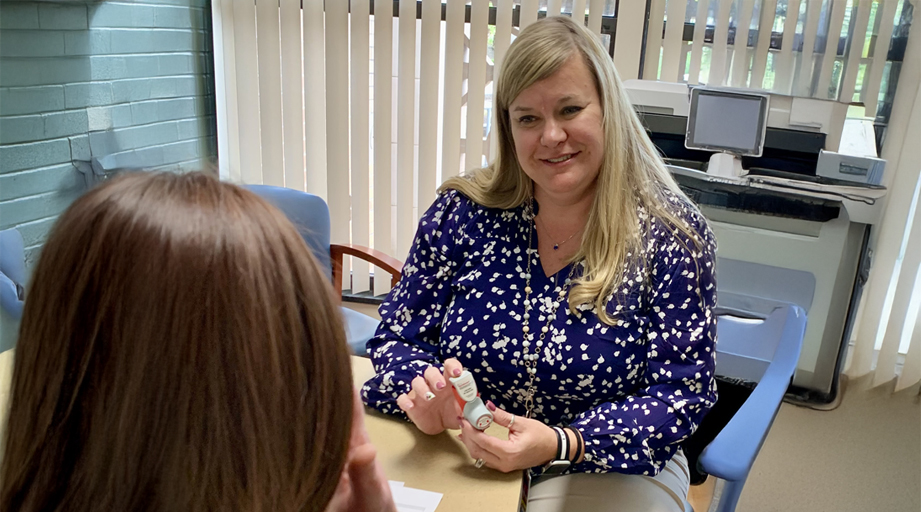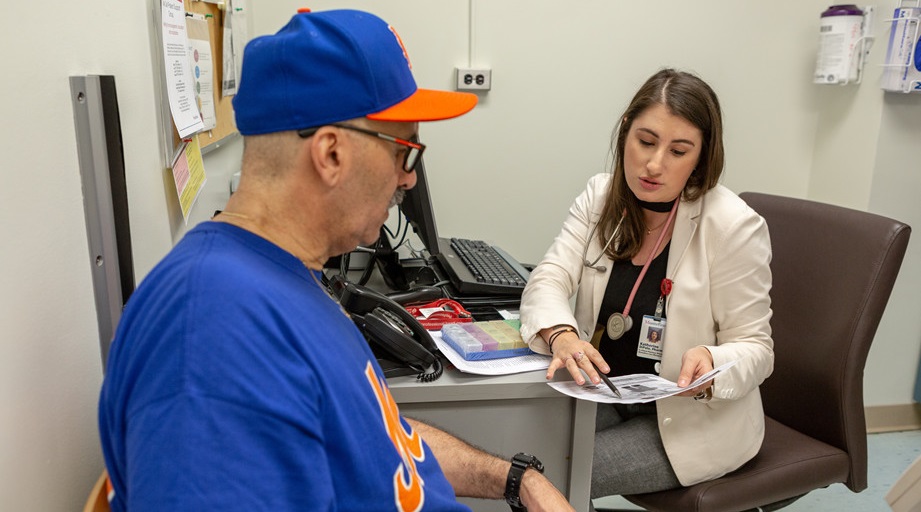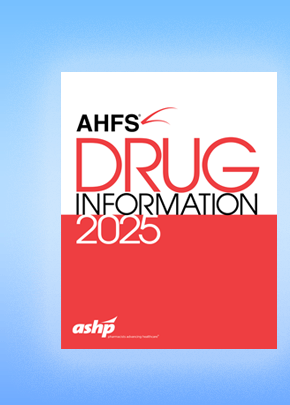
Join early adopters of artificial intelligence (AI) tools at Pharmacy Futures 2025 for a June 8 session about how to approach the technology with confidence and what to look out for during and after implementation.

“AI is created with mathematical algorithms and deep neural networks interacting behind the scenes to pull in all the data and kind of bring it up close and personal,” said Maritza Lew, past chair of the ASHP Section of Informatics and Technology and session moderator of AI for Frontline Pharmacy: A Practice Update Report. “As healthcare systems shift toward greater efficiency and more personalized care, pharmacists need practical knowledge about how AI works and how it can support their practice.”
ASHP news spoke with Lew ahead of the meeting. An edited transcript of the conversation appears below.
ASHP: What makes this session especially timely for our pharmacy futures attendees?
Lew: This session is especially timely because AI is no longer a futuristic concept in pharmacy practice — it’s here, and it’s evolving rapidly.
Pharmacists are already encountering AI embedded in clinical decision support systems and operational workflows. It’s essential for them to be active partners in AI implementation. That means knowing how to evaluate AI tools critically and how to prepare for their broader impact on pharmacy practice.
Give some examples of how AI is already being used in pharmacy practice.
Lew: Clinically, AI is currently used in medication therapy management, drug interaction screening, and predictive analytics for patient outcomes — such as sepsis detection algorithms.
Nonclinically, pharmacy involves many repetitive, time-consuming tasks. AI can help by optimizing inventory management, automating administrative work like invoice processing, assisting with prior authorizations, and supporting supply chain logistics.
AI can also improve patient communication, especially for those managing complex regimens. For instance, it can help generate personalized patient education plans using language appropriate for the patient’s reading level — applications people may not immediately associate with AI.
When implementing a new AI pharmacy tool, what sort of oversight is needed and what should trigger an intervention or reassessment of the implementation process?
Lew: That’s a critical question. As soon as AI enters the conversation — even as a proposal at the executive level — pharmacists should advocate for a multidisciplinary review process.
Because medications touch every area of healthcare — inpatient, outpatient, and beyond — it’s vital that pharmacists are involved in evaluating how AI tools are implemented and used. Key considerations include usability and whether the AI model was trained on a population representative of your patient base.
Oversight should include regular audits to ensure the outputs are clinically sound and unbiased. Reassessments should occur routinely, especially when medication safety is involved. Red flags include medication errors, inconsistent recommendations, workflow disruptions, or evidence of bias.
We often assume that a system will continue functioning as intended, but that’s not always the case. With AI — especially in patient care — we need transparency. I often compare it to reviewing a restaurant check. If you always trust the bill and never verify it, you might end up paying too much or for something you didn’t order. That same scrutiny is needed with AI.
What are some of the most exciting AI pharmacy tools that we might see in the next few years?
Lew: I’m especially excited about AI-driven predictive models that can personalize medication therapy. These tools could integrate data from genetics, lab results, and lifestyle factors to tailor treatment more precisely.
Right now, prescribing can feel one-dimensional: A diagnosis leads to a standard treatment. But we often overlook broader determinants of health. Predictive models with robust datasets could help change that.
Another area to watch is natural language processing (NLP) and translation. For example, if a patient speaks limited English and needs to take medication at a precise time, NLP tools could translate instructions accurately into their preferred language and at an appropriate reading level. That could make a real difference in adherence and outcomes.
Imagine an attendee coming up to you after the session; what could they say about the session that would make your day?
Lew: If someone said, “I feel less overwhelmed now. I understand more about AI, and I’m walking away with a new perspective — I’m more open and better prepared to engage with this technology,” that would absolutely make my day.
Ultimately, I want attendees to leave feeling empowered, informed, and confident about taking the next step with AI in their practice.







